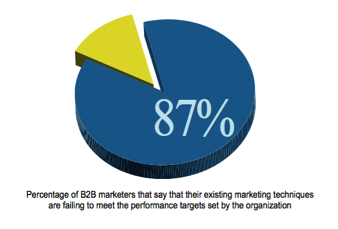New Gleanster Research Shows RPM Hinges On Analytics & Aligned Approach To Revenue
- Written by Demand Gen Report Team
- Published in Industry News
 While BtoB organizations migrate toward the practice of Revenue Performance Management (RPM), the concept is still in its infancy and requires greater sales and marketing alignment to be optimally effective, according to new Gleanster Research.
While BtoB organizations migrate toward the practice of Revenue Performance Management (RPM), the concept is still in its infancy and requires greater sales and marketing alignment to be optimally effective, according to new Gleanster Research.
Although marketing automation technology adopters utilize features like lead scoring, nurturing, and CRM integration, the Gleanster report, found that these tactics fail to address fundamental areas of RPM: connectivity, and dashboards and analytics.
The report, titled Revenue Performance Management: The Sales and Marketing Playbook Finally Has a Name, noted the need for a structured approach to RPM, to optimize measurement efficiency, and integrate and analyze company data from webinars, events, SEM and direct mail, among other key tactics.
According to the report, 87% of BtoB marketers who participated in the Q4 2010 survey on Lead Nurturing indicated that traditional marketing techniques (email, tele-prospecting, direct mail, and events) were not meeting performance targets set by the organization.
The need for dashboards and analytics is alive and well, although the report noted that there are few single dashboard-features available that can prove RPM metrics across the entire lead lifecycle. A majority (65%) of top performing companies indicates they still spend “significant time” manually creating measurement dashboard and analytics — 78% of these top performing organizations utilize a lead management technology, according to the report. These tactics must be automated for RPM to be a scalable tactic, the report said.
The report found marketing is accountable for demand gen and sales is accountable for pipeline performance and revenue. However, the concept of RPM breaks down divisions of labor to align the organization around a common goal: revenue performance.
While marketers are tasked with identifying or creating demand, average organizations still struggle to integrate quantitative measurement and accountability into marketing processes, the report noted. Further validating the need for greater alignment, the report also indicated that the disconnect in quantitative decision-making is the reason why organizations lack visibility at the top of the funnel.
According to the report, top performers are two times more likely to share the definition of a qualified lead between sales and marketing. Top performers are starting to incentivize marketers based on pipeline metrics rather than campaign performance. Moreover, a small but growing number of top performers are breaking down the division between marketing and sales, the report said.
Based on the Gleanster survey, revenue attribution on marketing campaigns was found to be a challenge for 45% of top performers and 78% of all other surveyed in Q1 on lead scoring, the report said.
For more insights on RPM trends and tactics, download the full Gleanster report here.

